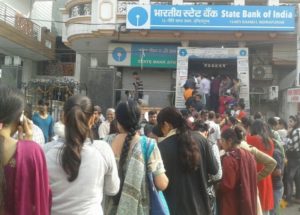LEAD BANK SCHEME:
• In 1969 LEAD BANK SCHEME importance was recognized by the D.R.Gadgil study group.
• The study group stated the fact that commercial banks did not have adequate presence in rural areas and recommended the adoption of an ‘AREA APPROACH’ to evolve plans and programs for the development of adequate banking and credit structure in rural areas.
• NARIMAN committee appointed by RBI endorsed the ideas of area approach in its report recommended that each bank should concentrate on certain districts where it can act as ‘LEAD BANK’.

• Pursuant to the above recommendations, the lead bank scheme was introduced by RBI in December 1969.
• The lead bank scheme assigned lead role to individual banks in the public sector and private sector for the districts allotted to them.
• A bank having a relatively large network of branches in rural areas of given districts and having adequate financial and manpower was generally been entrusted with the lead responsibility for that district.
• The lead bank act as a leader for coordinating the efforts of all credit institutions to increase the flow of credit to agriculture, small scale industries, and other areas.
BASIC SAVING BANK DEPOSIT ACCOUNT (BSBDA)
• Banks are required to convert existing ’no frills’ accounts into a “basic saving bank deposit account” which is also a zero balance account.
• An individual can have only one BSBDA in the bank.
• Holders of BSBDA will not be eligible for opening any other savings account in that bank but can have term/fixed deposit, recurring deposit, etc.,

• If a customer has any other existing savings account in that bank they should close it within 30 days from the date of opening a BSBDA.
• Banks are advised not to impose restrictions like age and income criteria of the individual for opening BSBDA.
BSBDA – small accounts would be subject to the following conditions:
• Total credit in such accounts should not exceed one lakh rupees in a year.
• Maximum balance in the account should not exceed fifty thousand rupees at any time.
• The total of debits by way of cash withdrawals and transfers will not exceed ten thousand rupees in a month.
• Foreign remittances can not be credited to small accounts without completing normal KYC formalities.
In the next article, we will discuss the small banks.
|
ReplyForward
|



